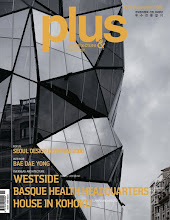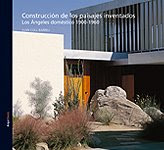Floor-to-ceiling glass walls and hygienic interiors, well sunny and ventilated, flushed in a private outdoor space dominated by the water of the ocean or the brightness of a swimming pool, were the scene of the intimate, clean, life and chromatically direct realism of Los Angeles as it was drawn by David Hockney. The wave of athletic architectures inspiring of the Pop Art of the 1960s was nourished, in turn, of theories about the care of the body undertaken by Lovell in the 1920s, the compact experiments of the early 1930s, the use of new construction materials in the programmes of Entenza during and after the WWII and, above all, the American economic opulence in the post-war years. It had already swept Southern California coast during the 1950s to be identified with the region and, at the same time, it had spread to be recognized as an international style, a sort of great generalized architectural surfing -anonymous, friendly and repeatable in the center of the 20th century.
In the Hunt House, living, sleeping and taking-shower areas are located between glass courtyards and carpeted platforms placed on the sand. The technological aspirations of steel disappears under the soft expression of wood, and the gray abstraction of the facades lives with relaxed ocean blue and warm beach pink.
Vidrio de suelo a techo e interiores higiénicos, bien soleados y ventilados, volcados a un espacio exterior privado, dominado por el agua del Océano o los brillos de una piscina, fueron el escenario del realismo íntimo, limpio, vitalista y cromáticamente directo del Los Ángeles dibujado por David Hockney. Nutrida a su vez de las teorías sobre el cuidado del cuerpo iniciadas por Lovell en los años 20, de los experimentos compactos de los años 30, de la utilización de los nuevos materiales de construcción en los programas de Entenza durante y después de la guerra y, sobre todo, de la opulencia económica norteamericana en los años de posguerra, la ola de las arquitecturas atléticas inspiradoras del Pop Art de los 60 había barrido ya la costa de California durante los años 50 hasta llegar a identificarse con la región y, al mismo tiempo, se había extendido hasta ser reconocida como un estilo internacional, una suerte de gran surfing arquitectónico generalizado, amable, anónimo y repetible en el centro del siglo XX.
En la casa Hunt, los espacios de estar, dormir y ducharse se sucedían entre patios de vidrio y plataformas enmoquetadas sobre la arena. La aspiración tecnológica del acero desparecía bajo la expresión blanda de la madera, y la abstracción gris de las fachadas convivía con el azul relajado del Océano y el rosa cálido de la playa.




















No comments:
Post a Comment